Expertise Provided by Mark Robertson
To evaluate industrials stocks a comprehensive methodology is necessary. To do this, we need to study the company's goals and how the industry works. Investors can use this guide to choose stable industrial companies for long-term growth. The following approach provides a way to value stocks;
Analysis of Financial Statements:
To analyze financial statements, we have to be vigilant, and it is necessary to check the different accounting standard.
a) Income Statement: The income statement shows how a company makes money and if it is profitable. Examining revenue and profit margins helps determine earnings and recognize patterns.
b) Balance Sheet: To understand the company's financial situation, we need to look at the balance sheet. You can understand how the organization's money is set up by looking at what it owns, what it owes, and what it's worth. To determine liquidity and solvency, we look at working capital, debt levels, and the current ratio.
c) Cash Flow Statement: The cash flow statement illustrates how money flows in and, out of a business. To determine if a company can pay expenses, invest, and meet obligations, we look at cash flows. Cash flows come from operations, investments, and financing activities. For the sustainability of the company, it is necessary to main the positive cash flow.
Operational Efficiency:
Efficient operations are important for a company to be competitive and stable. By managing its resources and turning a profit, a company can gauge how well it generates results. To verify this, we can look at how quickly customers pay, how often accounts change, and how fast inventory is sold.
Ratios and Financial Metrics:
Examining financial ratios, once gets the numerical perspective of company’s performance. Profitability ratios (ROE, ROA, and profit margins) show how well a business can make money. The current ratio and quick ratio check if the company can pay its short-term debts. The debt-to-equity ratio and interest coverage ratio measure the company's financial risk.
Industry Analysis:
Understanding of the industry sector is vital for evaluating a company’s performance. Analyzing industry trends, obstacles and growth potential provides a foundation for assessing businesses. To know where a company stands in the industry, we look at its market share and competitive advantage.
Corporate Governance:
It is important to take into account the management team's experience and skill set. A company with skilled leaders can overcome obstacles and seize opportunities. When evaluating how decisions are made, it is important to ensure oversight and openness.
Research and Development (R&D) and Innovation:
For any business, innovation plays a key role in its success. By examining a company’s investment, in R&D we can gain insights into its competitiveness. Looking at past successes can give us an idea of how things might grow in the future.
Global Economic Factors:
Industrial companies need to consider the global economy when operating in markets. Studying how the economy affects the market helps us predict challenges and opportunities.
Regulatory Environment:
Understanding how regulations may affect operations and compliance is vital. Companies that navigate obstacles show adaptability and resilience.
Dividends and Share Buybacks:
The company's history of paying dividends shows it values its shareholders. The implementation of a share buyback program can be seen as an outlook for growth. Both income focused investors find these factors appealing.
Economic Indicators and Analyst Reports:
We can see how the industrial sector is doing by looking at economic signs. The manufacturing indices, GDP growth, and interest rates all affect the sector's performance. To stay up to date on the market, read press releases, business articles, and analyst reports. This data makes it easier to evaluate a company's current state and future potential.
Management and Corporate Governance:
The expertise and background of the management team play a key role in any organization. An organization can more effectively overcome challenges and capitalize when its leaders are experience.
of opportunities. By evaluating governance practices, we ensure oversight and transparency, in the decision-making process.
Methods of Stock Valuation
To determine the value of a stock, we need to look at the company, the industry, and our goals and preferences. Each valuation method has its pros and cons. Utilizing a combination of methods can provide a comprehensive overview. First, let's look at the Discounted Cash Flow (DCF) approach. It focuses on cash flow projections and intrinsic value.
Discounted Cash Flow (DCF):
When using the discounted cash flow (DCF) method, first we have to find out the cash flows of a company. Then it discounts those cash flows to their present value. This determines the true value of the stock. The discount rate used here is the cost of capital or the required rate of return for investors.
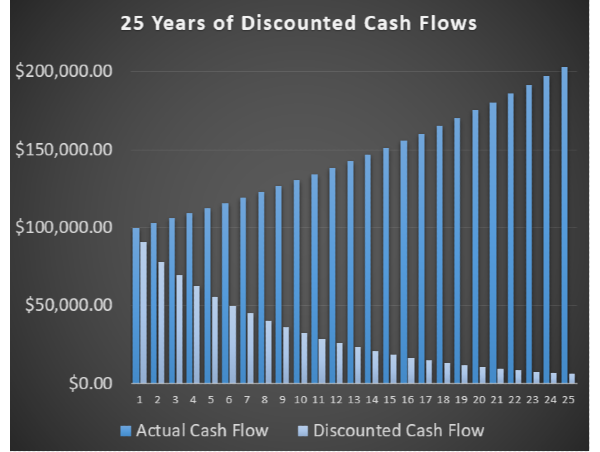 Source: Lyn Alden
Source: Lyn Alden
When to Use It:
• In Depth Analysis: DCF is most suitable for investors who're willing to analyze a company. It requires an understanding of the company, its industry and the ability to forecast cash flows.
• Long Term Investment: DCF is for investors who want to know the true worth of a company and have a long-term view. It provides an evaluation of a company’s worth based on its potential for cash flow.
• Company Specific Analysis: DCF works best when examining companies with characteristics or those operating in sectors where traditional valuation metrics may not be as effective.
DCF Components:
• Forecasting Free Cash Flows (FCF): It is a practice to estimate the funds, for all investors (both debt and equity holders) by forecasting free cash flows.
• Discount Rate (WACC): The WACC represents the opportunity cost of investing in a company comprising the cost of debt and equity. It is also known as weighted average cost of capital.
Example: Let’s consider a company named ABC Inc. that is expected to generate free cash flows of $10 million, $12 million, $15 million, $18 million, $20 million over the next five years, and the cash flow grows at the rate of 5%. If we use an 8% discount rate (WACC) the DCF calculation would look like this;

Now the intrinsic value of the firm is $758.30.
Comparable Company Analysis (CCA):
In CCA, we compare the target company to similar publicly traded companies using metrics and valuation multiples. We need to determine if the target company's value is lower or higher than its competitors. This will tell us if it is undervalued or overvalued.
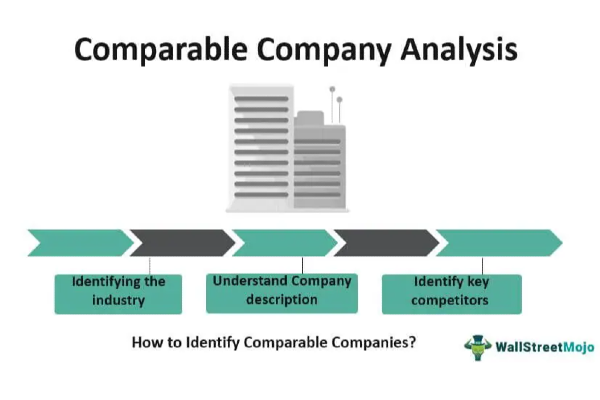 Source: Wall Street Mojo
Source: Wall Street Mojo
When to Use:
• Relatively Simple Comparison: CCA proves helpful when straightforward comparisons are desired. We compare the target company's metrics and valuation multiples to other companies in the same industry. This helps us assess its performance.
• Lack of Sufficient Information: When it's difficult to estimate metrics or when there's limited information, CCA provides a quick and efficient way to determine the value of a private company.
Steps involved in Comparable Company Analysis (CCA):
i. Identifying Comparable Companies: Choose companies, from the industry that have sizes, growth prospects and risk profiles.
ii. Gathering Financial Data: Collect information like revenue, earnings and other relevant metrics.
iii. Determining Valuation Multiples: multiples such as price to earnings (P/E) price to sales (P/S) and enterprise value, to EBITDA (EV/EBITDA) ratios are calculated.
iv. Applying Multiples to the Target Company: Multiply the metrics of the target company by the multiples of comparable companies.
Example: Let’s say you're assessing XYZ Corp., a technology company. You identify companies A, B and C that share profit margins and growth rates. You can use the P/E ratio of A, B and C (which's 20) to calculate XYZ Corp’s valuation.

Dividend Discount Model (DDM):
DDM uses the present value of a stock's projected future dividend payments to determine its value. It is based on the idea that the present value of all future dividends equals the intrinsic value of a stock.
 Source : Faster Capital
Source : Faster Capital
When to Apply:
• Stocks that Pay Dividends: DDM is most suitable, for evaluating stocks that consistently provide dividends. It provides a framework for investors who prioritize generating income from their investment.
• Established Companies with Dividends: DDM is valuable when assessing companies that have a history of paying dividends. It may be less applicable to businesses, with dividend practices.
• Investors Seeking Income: For individuals seeking a source of income the Dividend Discount Model (DDM) can be particularly attractive as it values stocks based on their ability to distribute dividends.
DDM Components:
• Projected Dividends: Estimate the expected amount of dividends that a company will pay out. This approach works best for established companies, with a history of dividend payments.
• Required Rate of Return (Discount Rate): Determine the rate of return to incentivize investors to hold the stock. This rate is often based on the company’s risk profile.
Example: Let’s consider DEF Ltd., a company that currently pays a dividend of $2, per share with an annual increase of 5%. We can use the Gordon Growth Model, a part of DDM, to calculate value. The required rate of return is 10%.
 This is the intrinsic value of per share.
This is the intrinsic value of per share.
Conclusion:
Assessing stocks is like being a detective investigating a company's health and potential. At first, you look at its income statement, balance sheet, and cash flow statement. This helps you see if it is making money and managing its resources well. Afterwards, you check how well it works by looking at ratios and metrics to get numbers. When looking at a business, it's crucial to consider its industry and the laws that apply. When making decisions, it's important to consider the company's management as well. While determining the intrinsic value of stock there are many methods to consider. The methods used are Discounted Cash Flow, Comparable Company Analysis, and the Dividend Discount Model. Each method has its own pros and cons so, it necessary to decide the best suited model for valuation.
Moreover you can also read how to value utility stocks here as well. This article will also you in-depth knowledge of utility stocks.
Read more about Industrial Stocks in our ongoing sector series:
The Top Industrial Stocks
Are Industrials a Good Investment?
The Best Industrial ETFs
How do you Evaluate Industrial Stocks?
What is the Manufacturing Sector
Industrial Stocks with Dividends
Why Invest in Manufacturing Stocks
Important Manufacturing Sector Ratios
Why are Industrial Stocks Doing Well
What Affects the Industrial Industry?


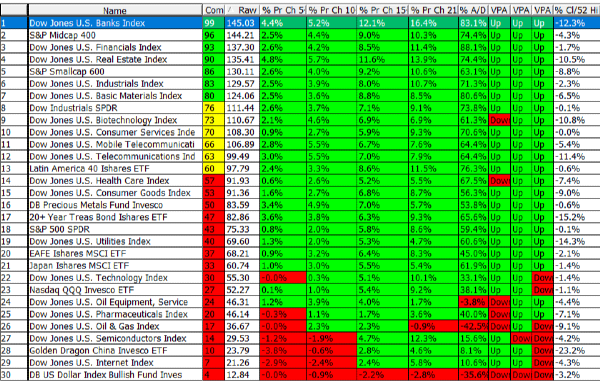

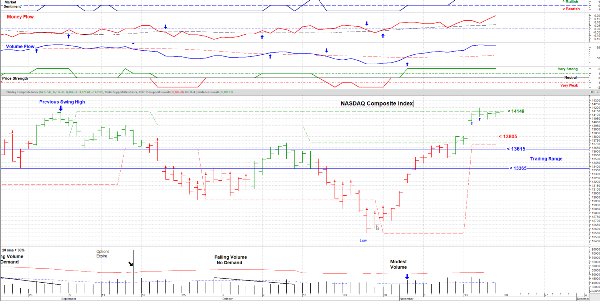



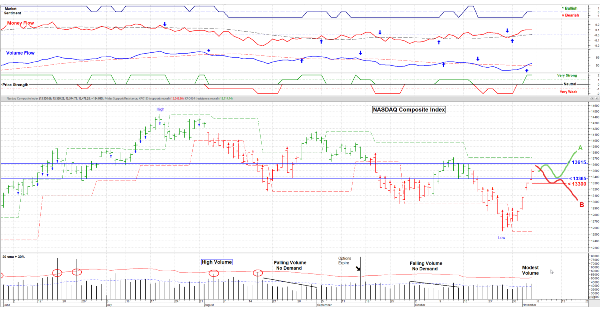




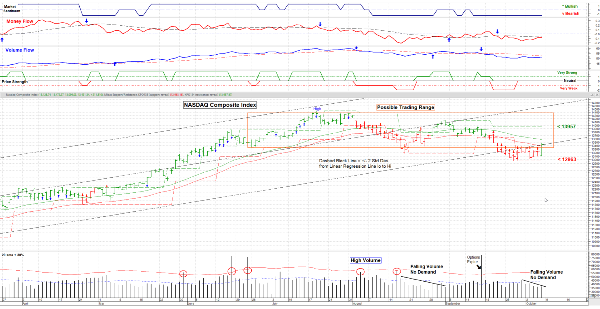
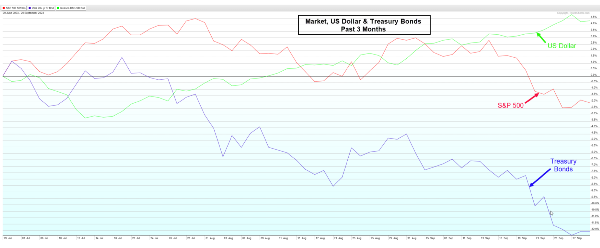


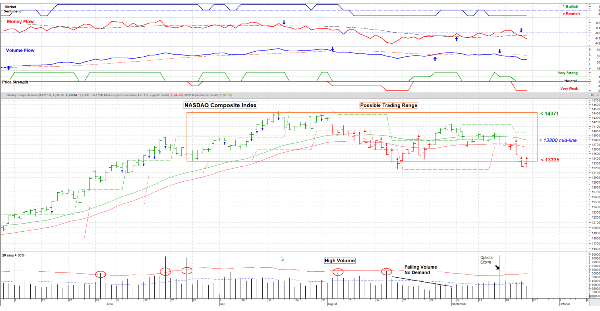
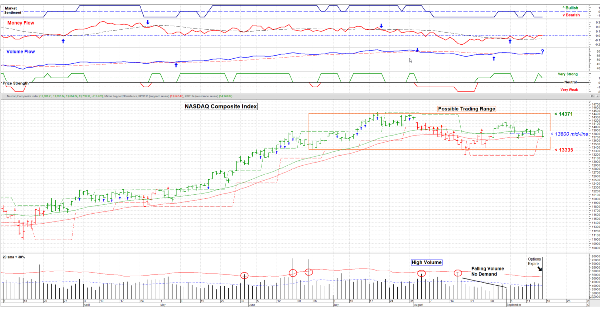
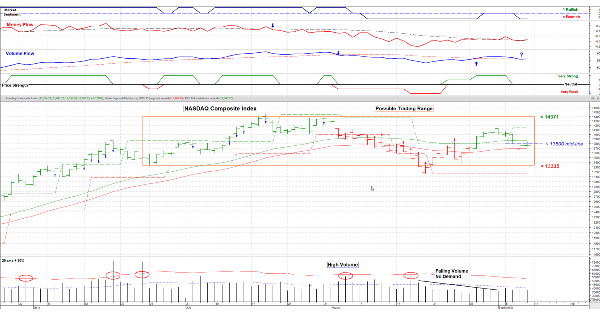










Expertise Provided by Mark Robertson
To evaluate industrials stocks a comprehensive methodology is necessary. To do this, we need to study the company's goals and how the industry works. Investors can use this guide to choose stable industrial companies for long-term growth. The following approach provides a way to value stocks;
Analysis of Financial Statements:
To analyze financial statements, we have to be vigilant, and it is necessary to check the different accounting standard.
a) Income Statement: The income statement shows how a company makes money and if it is profitable. Examining revenue and profit margins helps determine earnings and recognize patterns.
b) Balance Sheet: To understand the company's financial situation, we need to look at the balance sheet. You can understand how the organization's money is set up by looking at what it owns, what it owes, and what it's worth. To determine liquidity and solvency, we look at working capital, debt levels, and the current ratio.
c) Cash Flow Statement: The cash flow statement illustrates how money flows in and, out of a business. To determine if a company can pay expenses, invest, and meet obligations, we look at cash flows. Cash flows come from operations, investments, and financing activities. For the sustainability of the company, it is necessary to main the positive cash flow.
Operational Efficiency:
Efficient operations are important for a company to be competitive and stable. By managing its resources and turning a profit, a company can gauge how well it generates results. To verify this, we can look at how quickly customers pay, how often accounts change, and how fast inventory is sold.
Ratios and Financial Metrics:
Examining financial ratios, once gets the numerical perspective of company’s performance. Profitability ratios (ROE, ROA, and profit margins) show how well a business can make money. The current ratio and quick ratio check if the company can pay its short-term debts. The debt-to-equity ratio and interest coverage ratio measure the company's financial risk.
Industry Analysis:
Understanding of the industry sector is vital for evaluating a company’s performance. Analyzing industry trends, obstacles and growth potential provides a foundation for assessing businesses. To know where a company stands in the industry, we look at its market share and competitive advantage.
Corporate Governance:
It is important to take into account the management team's experience and skill set. A company with skilled leaders can overcome obstacles and seize opportunities. When evaluating how decisions are made, it is important to ensure oversight and openness.
Research and Development (R&D) and Innovation:
For any business, innovation plays a key role in its success. By examining a company’s investment, in R&D we can gain insights into its competitiveness. Looking at past successes can give us an idea of how things might grow in the future.
Global Economic Factors:
Industrial companies need to consider the global economy when operating in markets. Studying how the economy affects the market helps us predict challenges and opportunities.
Regulatory Environment:
Understanding how regulations may affect operations and compliance is vital. Companies that navigate obstacles show adaptability and resilience.
Dividends and Share Buybacks:
The company's history of paying dividends shows it values its shareholders. The implementation of a share buyback program can be seen as an outlook for growth. Both income focused investors find these factors appealing.
Economic Indicators and Analyst Reports:
We can see how the industrial sector is doing by looking at economic signs. The manufacturing indices, GDP growth, and interest rates all affect the sector's performance. To stay up to date on the market, read press releases, business articles, and analyst reports. This data makes it easier to evaluate a company's current state and future potential.
Management and Corporate Governance:
The expertise and background of the management team play a key role in any organization. An organization can more effectively overcome challenges and capitalize when its leaders are experience. of opportunities. By evaluating governance practices, we ensure oversight and transparency, in the decision-making process.
Methods of Stock Valuation
To determine the value of a stock, we need to look at the company, the industry, and our goals and preferences. Each valuation method has its pros and cons. Utilizing a combination of methods can provide a comprehensive overview. First, let's look at the Discounted Cash Flow (DCF) approach. It focuses on cash flow projections and intrinsic value.
Discounted Cash Flow (DCF):
When using the discounted cash flow (DCF) method, first we have to find out the cash flows of a company. Then it discounts those cash flows to their present value. This determines the true value of the stock. The discount rate used here is the cost of capital or the required rate of return for investors.
When to Use It:
• In Depth Analysis: DCF is most suitable for investors who're willing to analyze a company. It requires an understanding of the company, its industry and the ability to forecast cash flows.
• Long Term Investment: DCF is for investors who want to know the true worth of a company and have a long-term view. It provides an evaluation of a company’s worth based on its potential for cash flow.
• Company Specific Analysis: DCF works best when examining companies with characteristics or those operating in sectors where traditional valuation metrics may not be as effective.
DCF Components:
• Forecasting Free Cash Flows (FCF): It is a practice to estimate the funds, for all investors (both debt and equity holders) by forecasting free cash flows.
• Discount Rate (WACC): The WACC represents the opportunity cost of investing in a company comprising the cost of debt and equity. It is also known as weighted average cost of capital.
Example: Let’s consider a company named ABC Inc. that is expected to generate free cash flows of $10 million, $12 million, $15 million, $18 million, $20 million over the next five years, and the cash flow grows at the rate of 5%. If we use an 8% discount rate (WACC) the DCF calculation would look like this;
Now the intrinsic value of the firm is $758.30.
Comparable Company Analysis (CCA):
In CCA, we compare the target company to similar publicly traded companies using metrics and valuation multiples. We need to determine if the target company's value is lower or higher than its competitors. This will tell us if it is undervalued or overvalued.
When to Use:
• Relatively Simple Comparison: CCA proves helpful when straightforward comparisons are desired. We compare the target company's metrics and valuation multiples to other companies in the same industry. This helps us assess its performance.
• Lack of Sufficient Information: When it's difficult to estimate metrics or when there's limited information, CCA provides a quick and efficient way to determine the value of a private company.
Steps involved in Comparable Company Analysis (CCA):
i. Identifying Comparable Companies: Choose companies, from the industry that have sizes, growth prospects and risk profiles. ii. Gathering Financial Data: Collect information like revenue, earnings and other relevant metrics. iii. Determining Valuation Multiples: multiples such as price to earnings (P/E) price to sales (P/S) and enterprise value, to EBITDA (EV/EBITDA) ratios are calculated. iv. Applying Multiples to the Target Company: Multiply the metrics of the target company by the multiples of comparable companies.
Example: Let’s say you're assessing XYZ Corp., a technology company. You identify companies A, B and C that share profit margins and growth rates. You can use the P/E ratio of A, B and C (which's 20) to calculate XYZ Corp’s valuation.
Dividend Discount Model (DDM):
DDM uses the present value of a stock's projected future dividend payments to determine its value. It is based on the idea that the present value of all future dividends equals the intrinsic value of a stock.
When to Apply:
• Stocks that Pay Dividends: DDM is most suitable, for evaluating stocks that consistently provide dividends. It provides a framework for investors who prioritize generating income from their investment.
• Established Companies with Dividends: DDM is valuable when assessing companies that have a history of paying dividends. It may be less applicable to businesses, with dividend practices.
• Investors Seeking Income: For individuals seeking a source of income the Dividend Discount Model (DDM) can be particularly attractive as it values stocks based on their ability to distribute dividends.
DDM Components:
• Projected Dividends: Estimate the expected amount of dividends that a company will pay out. This approach works best for established companies, with a history of dividend payments.
• Required Rate of Return (Discount Rate): Determine the rate of return to incentivize investors to hold the stock. This rate is often based on the company’s risk profile.
Example: Let’s consider DEF Ltd., a company that currently pays a dividend of $2, per share with an annual increase of 5%. We can use the Gordon Growth Model, a part of DDM, to calculate value. The required rate of return is 10%.
Conclusion:
Assessing stocks is like being a detective investigating a company's health and potential. At first, you look at its income statement, balance sheet, and cash flow statement. This helps you see if it is making money and managing its resources well. Afterwards, you check how well it works by looking at ratios and metrics to get numbers. When looking at a business, it's crucial to consider its industry and the laws that apply. When making decisions, it's important to consider the company's management as well. While determining the intrinsic value of stock there are many methods to consider. The methods used are Discounted Cash Flow, Comparable Company Analysis, and the Dividend Discount Model. Each method has its own pros and cons so, it necessary to decide the best suited model for valuation.
Moreover you can also read how to value utility stocks here as well. This article will also you in-depth knowledge of utility stocks.
Read more about Industrial Stocks in our ongoing sector series:
The Top Industrial Stocks
Are Industrials a Good Investment?
The Best Industrial ETFs
How do you Evaluate Industrial Stocks?
What is the Manufacturing Sector
Industrial Stocks with Dividends
Why Invest in Manufacturing Stocks
Important Manufacturing Sector Ratios
Why are Industrial Stocks Doing Well
What Affects the Industrial Industry?